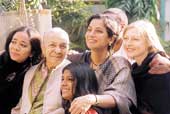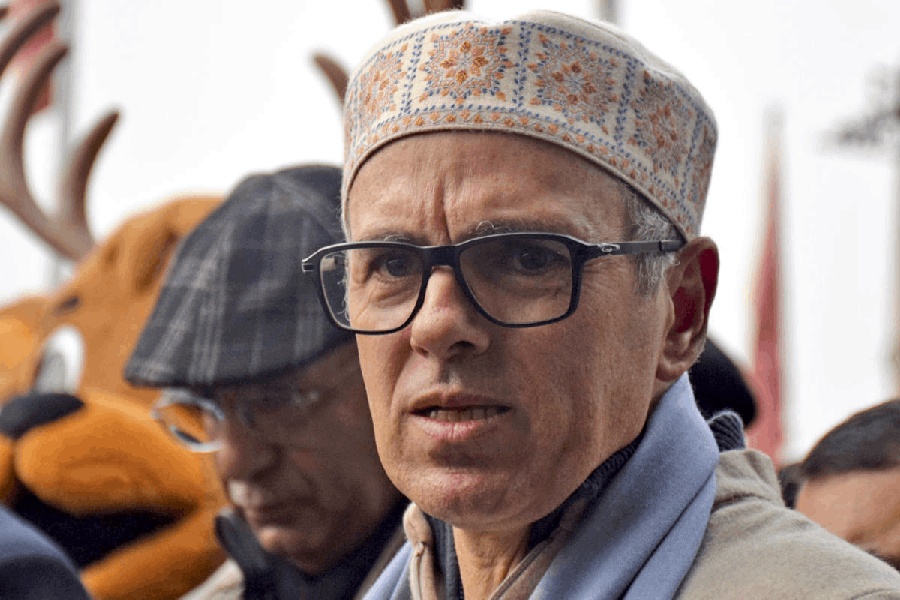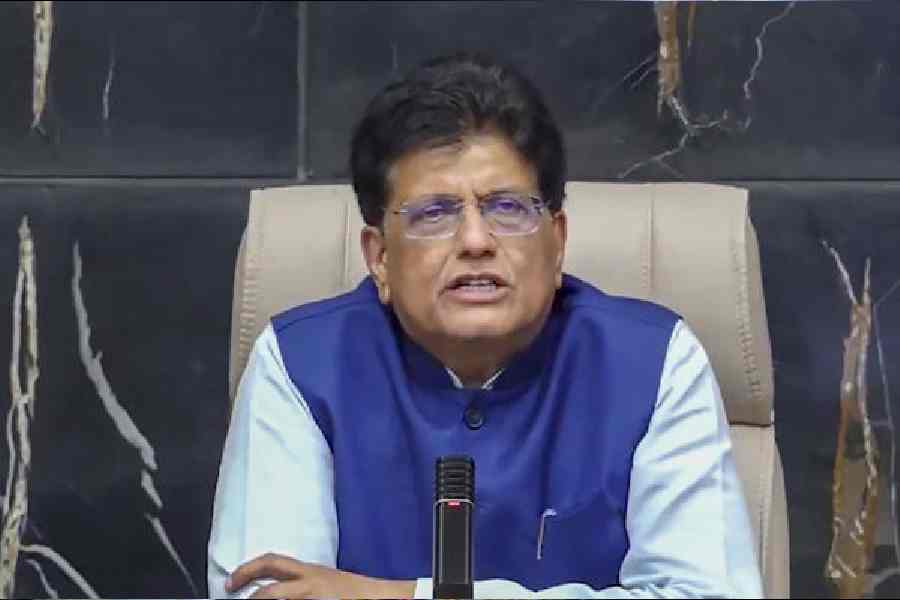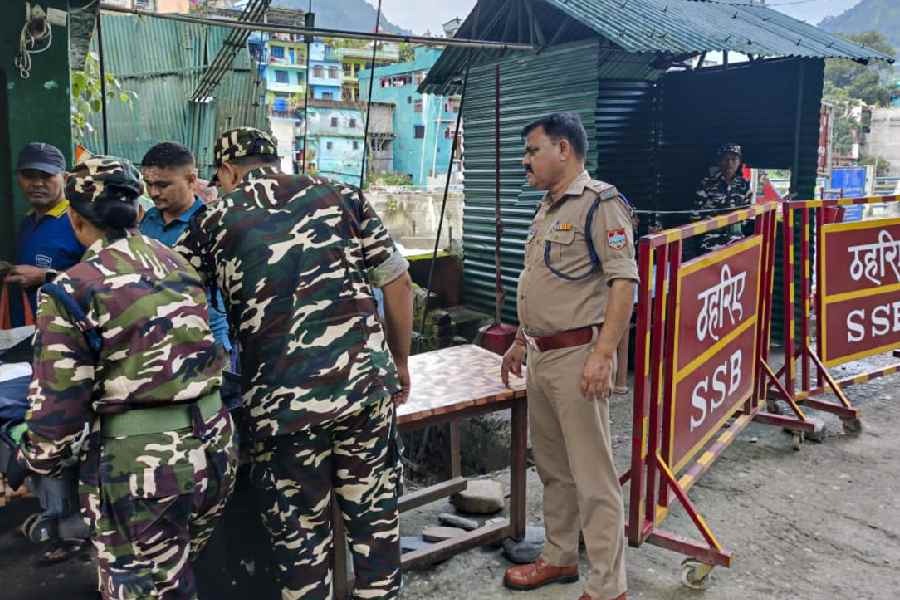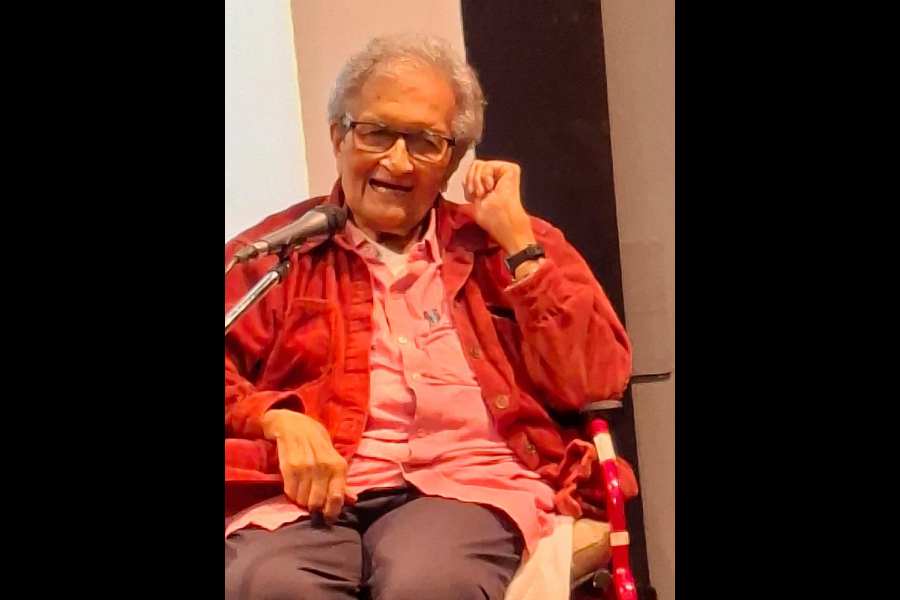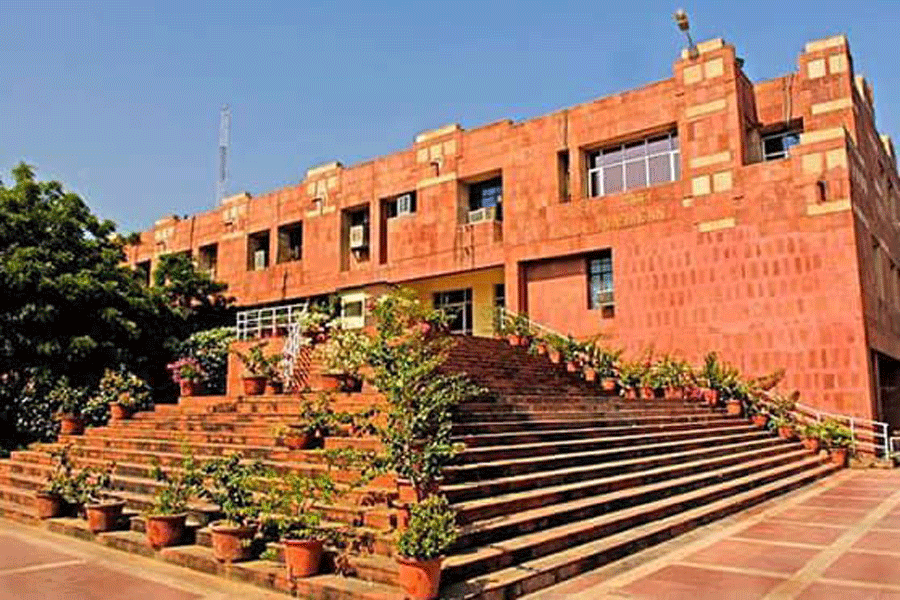 |
| Zohra Sehgal, Shabana Azmi and Nandita Das when they came to town with The Spirit of Anne Frank. The Telegraph file pictures |
Theatre or more specifically proscenium theatre came to the east bank of the Hooghly with the early successors of Job Charnock. It soon became the expression of an urban culture that spanned out from the sahibs who lived in the village of Gobindapur to the native quarters in Sutanuti. Though theatre was a British import, it was not restricted to English language alone. Bengali theatre got off to a grand start and roared ahead through the 19th and early 20th centuries. But English theatre has survived, through the transfer of the imperial capital from Calcutta to Delhi, the turbulent age of nationalism, the end of colonial rule, the Partition and the urban decay in its wake.
It is only when you look back do you begin to realise that English theatre in Calcutta has a history and a heritage. Local talents prospered with the likes of Utpal Dutt, Pratap Roy and Dean Gasper. And, of course, the father of modern English theatre in India, Jeffrey Kendall.
By the time I was old enough to be aware of the city’s English theatre, The Dramatic Club of Calcutta (DCC) and The Amateurs had established themselves. Calcutta had its own stars like Phyllis Bose and Cedric Spanos, Stella Brown and Vimal Bhagat, Junie Bose and Rajen Brijnath, or Zarine Chaudhuri and Jayant Kripalani in my own generation. They all contributed to inspiring me and my generation to fling ourselves headlong into the magic realm of theatre.
Certain productions staged by our predecessors had left on us a deep impact. Like Vimal Bhagat’s A Man for All Seasons or Phyllis Bose-Cedric Spanos’ She Stoops to Conquer. There were some brave and remarkable experiments like Swarn Chaudhuri’s adaptations of Hindi plays that brought us Halfway House, Silence the Court is in Session and Sakharam Binder.
Of course, it is in the nature of experiments that not all of them can succeed. But it is necessary not to forget that such creditable attempts had been made, particularly today when English theatre is still groping for original content. While our novelists have firmly established English as an Indian language, there has been very little creative playwriting in English, besides Mahesh Dattani or one Larins Sahib by Gurcharan Das.
It is true that almost all the plays staged by our earlier generation were by British dramatists, or at best, their trans-Atlantic cousins. Some of them were classics like Shakespeare, or comedies of manners, or even later, writers like Oscar Wilde. These were a safe bet as the literary value of the plays enriched the stage productions.
Problems surfaced when Ray Cooney-style bedroom farces or drawing room comedies of the Neil Simon sort crept into the Calcutta stage, which were abject imitations of West End or Broadway productions. Incidentally, these were the plays that created the basis for English theatre professionals in Mumbai. Those like Alyque Padamsee were either slavish and lavish copiers, or both, of West End and Broadway productions like Jesus Christ Superstar, Evita or Man from La Mancha.
Though Bengali theatre had achieved professional status almost at its birth, English theatre in Calcutta never had a local constituency large enough to be able to support full-time professionals. Perhaps that has been its problem and strength. It has always been a labour of love.
Apart from playwriting, the generation I belong to had produced some remarkable theatrical talents. Among those who have found fame beyond the city are Victor Banerjee and Jayant Kripalani. We can also certainly count Asoke Viswanathan, who had given us a bold Bhutto. While the DCC and the Amateurs had almost withered away by then, new groups like The Red Curtain had found a foothold. One can’t ignore the contribution of an Arjun Chaudhuri or Sumit Roy in The Red Curtain, and the talented Katy Lai Roy, who opened our eyes to the hitherto unknown art of theatrical costume.
I must also mention Zarine Chaudhuri’s work with the deaf that has contributed significantly to a major social need. And this achievement comes over and above her contribution to theatre as an actress who has brought alive so many flagging productions. The social content of the work done by Zarine and The Action Players counterbalanced the frivolous bedroom farces.
But it is not as though the other language theatres of the city did not contribute to the growth of English theatre. Padatik brought out Shyamanand Jalan, though for a limited interaction with English theatre. Hindi theatre has opened the doors to directors like Sheo K. Jhunjhunwala in English productions of Proscenium. Even Bengali theatre has contributed a talented director like Sohag Sen, with whom I worked in Spandan’s Pinky & Asha Mary, an Indianised version of Jean Genet’s The Maids, casting Konkona Sen Sharma and Niharika Seth.
Yet another noteworthy contribution came from an American theatre director who did The Dining Room in a Spandan-USIS joint production. Carol Fisher Sorgenfrei exposed us to technical and artistic standards that we are still trying to emulate a decade later. This was indeed a landmark, like The Spirit of Anne Frank that brought in a remarkable range of professional actors from Mumbai to our city — the octogenarian Zohra Sehgal, a mature Shabana Azmi and a young Nandita Das.
 |
| Konkona Sen Sharma in Pinky & Asha Mary: Fresh blood. |
Again and again, content and context have marred many an effort in English theatre, making sceptics question the very relevance of such ventures. But when I look back at the work my contemporaries did, which includes Rohit Pombra, Masudul Haque and those mentioned above, I am not sure. Despite the problems of finding sponsors, or the lack of a growing audience, what is it that continues to drive so many to keep doing plays in English, and that too, often at great personal expense? I have no easy answers.
We had a past, we have a present and we are looking to a future with new directors emerging in the city’s English theatre circuit. The assurance that we are not archaic comes from the continued activity of younger people like Dhruv Mookerjee, Tathagata Chowdhury or Keshav Roy. Only I would implore them to look for meaning and value in the areas where we have not searched. Like our novelists, our successors must create new English theatre for a more significant and relevant statement. That alone can help them grow.

